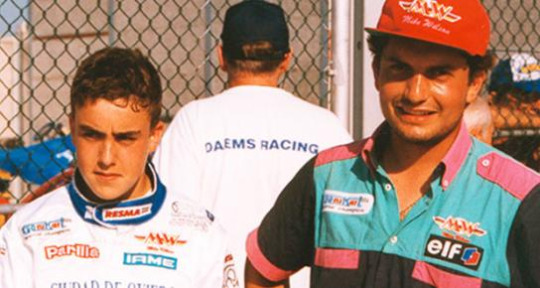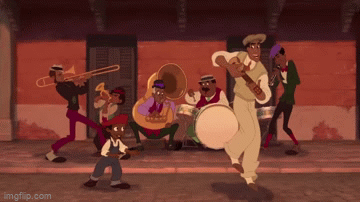#jose campos
Photo










Nieby Crofters Cottage, Schleswig-Holstein, Germany,
Jan Henrik Jansen and Marshall Blecher,
Photographs by Jose Campos
#art#design#architecture#interiors#renovation#cottage#nieby crofter#germany#jan henrik jansen#jose campos#minimal#schleswig-holstein#luxurylifestyle#luxuryhomes#luxuryhouses#countryhouse#marshall blecher
253 notes
·
View notes
Photo

House in Ansião, Portugal
Atelier Espaco P2
photo by Jose Campos
5 notes
·
View notes
Text

#Nieby Crofters Cottage#Jan Henrik Jansen#Marshall Blecher#Geltinger Birk#FF Arkitekten#Jose Campos#Germany#Kitchen#Dining Room#hans wegner#wishbone chair
5 notes
·
View notes
Note
I actually don't know what lusophone is ;-; i have family from são josé dos campos, but we rarely really get to meet or talk to them because we live like, half a globe apart hddgihf
Ooh it's portuguese speaker! But saying "descendente de falantes de português" is a mouthful 🫠
18 notes
·
View notes
Text
“Sin mística es imposible vivir una vida que tenga sentido”.
— José Donoso, Casa de Campo
2 notes
·
View notes
Text
Seleção Brasileira de Ciclismo de Estrada pronta para o Pan-Americano
A Seleção Brasileira de Ciclismo de Estrada se prepara para competir no Campeonato Pan-Americano em São José dos Campos. Serão provas de Contrarrelógio Individual e Resistência.
A Seleção Brasileira de Ciclismo de Estrada se prepara para competir no Campeonato Pan-Americano em São José dos Campos. Serão provas de Contrarrelógio Individual e Resistência.
A equipe brasileira de ciclismo está pronta para competir no Campeonato Pan-Americano em São José dos Campos, São Paulo, de 20 a 26 de Maio. O time tem 30 atletas em diferentes categorias e vai participar das provas de…

View On WordPress
0 notes
Text
Premiados Cante de las Minas 2023
Teresa Fernandez Herrera Periodista – Prensa Especializada
Rocío Luna, ganadora sin competidores de la Lámpara Minera 2023 en los Concursos del Cante de las Minas de La Unión.
Rocío Luna, Rocío Luna… Por fin recordé donde la había visto, no hacía mucho tiempo, en un lugar relacionado con concursos. Hasta que recordé: En noviembre 2022, en la finalísima de los Concursos Nacionales de Flamenco de…

View On WordPress
#62 EDICION#ANTONIO JOSE NIETO FERNANDEZ#CANTE DE LAS MINAS 2023#CONCURSO#CULTURA FLAMENCA#EL POTI#ENCARNACION FERNANDEZ#ESPAÑA#FUBEN JIMENEZ URBANO#GRANDES EXPECTATIVAS PARA 2024#JESUS CORBACHO#JUAN ANTONIO LOPEZ MOYA#JUAN LUIS CAMPOS TRIGUERO#LAMPARA MINERA 2023#lomasleido#MARI ANGELES CRUZADO#Miguel Poveda#MINAS DE LA UNION#PENCHO CROSS#Pepe de Pura#PREMIADOS#RAUL PEREZ FERNANDEZ#ROCIO CESPILLOS LUNA#ROCIO GARRIDO JOYA#ROCIO LUNA#SERGIO GOMEZ#YOEL VARGAS
0 notes
Text
Jorge Luis Borges - James Joyce (em três traduções)
"James Joyce", um poema de Jorge Luis Borges, em três traduções
Primeira tradução: Carlos Nejar e Alfredo Jacques.Revisão de trad.: Maria Carolina de Araújo e Jorge Schwartz
Em um dia do homem estão os diasdo tempo, desde o inconcebíveldia inicial do tempo, em que um terrívelDeus prefixou os dias e agonias,até aquele outro em que o ubíquo riodo tempo terrenal torne a sua fonte,que é o Eterno, e se apague no presente,no futuro, no passado o que agora é…

View On WordPress
#Alfredo Jacques#Augusto de Campos#Carlos Nejar#James Joyce#Jorge Luis Borges#Josely Vianna Baptista
0 notes
Text
Recently, Genís Marcó, the man that helped Fernando during his kart years, gave an interview with Mundo Deportivo, and it is really nice and helps you understand Fernando and where he comes from a little bit more so I summed up and translated the parts I think are more important and interesting for you 👇🏻
Fernando shone in the national categories, having his dad always by his side, who made a lot of sacrifices so his son could follow his dreams, Jose Luis acted as a mechanic and also as a chofer, driving Fernando from circuit to circuit with his van, money was tight so the only thing that kept Fernando racing were his wins.
When he had to make the jump to international racing, it was only possible thanks to the help of Josep Marcó and his son, Genís Marcó, who, after Fernando won the Catalunya Championship, started to travel around the world with him. Genís became Fernando's mechanic and chofer so Jose Luis could focus on his role as father, focusing more on cheering for Fernando than anything else.
During their time traveling together, Fernando usually slept once he was in the car, rarely speaking unless it was to complain because he was hungry. Fernando was a quiet kid that always knew how to keep calm, he never showed he was nervous because he was fast and he knew it.
Genís said that the thing that surprised him the most the first time he saw Fernando race was how fast he adapted to things, and how he would wait until the race was over to talk to his mechanic about the problems he had in the kart, he never complained. Genís also said he taught Fernando the importance of tyre management and that it was easy to work with Fernando because, as said before, he could adapt fast and never complained.
When they were training, Genís would usually modifiy Fernando's kart to make it harder to drive, putting more weight or changing it so it didn't turn as well, after he changed it all back to normal for the race, Fernando was even faster than before. This is something that Fernando uses now with his management kids during their simulator sessions!!
It was Genís the one who taught Fernando that if your car is good enough for 15°, you should aim for 10° and that if it is good enough for 3°, you should try to win, this is a philosophy Fernando has followed his entire career.
Genís also talks about how since the beginning Fernando knew this was his future, and that even in the worst times when money was tight, Fernando never stopped believing, but Genís was never that optimistic, and he said that at that moment he thought it would be really hard for Fernando to even drive in formulas because racing without money is almost impossible, but it was thanks to Adrian Campos, another guardian angle fot Fernando, that he could made that jump to single seaters, and Fernando made the most of that opportunity.
Genís also talked about how he couldn't help but get emotional when he went to Fernando's first F1 test for Minardi in Jaen because he was watching the little boy he had welcomed in his home so many times grow up. He said that he was really happy for Fernando, his parents and everyone in his family that always supported him. Genís also talked about how it makes him feel bad when he sees people criticize Fernando for his personality because once you meet him, he is different, he said Fernando is good at driving, nice, funny, and professional, very professional, and he believes Fernando still has plenty of time to do more amazing things like he is doing this year!
Genís left the karting team when his dad died but he came back when a friend of his called him to help his son with his career, that boy is Pepe Martí, 5th this year in F3, the new addition to the Red Bull academy and one of Fernando's management kids :)
This is Fernando with Genís when he was young <3


#i hope the translation is okay and it makes sense lol#it's really nice to see people from fernando's past talk so nicely about him#he deserves the world idc#thank you genis and adrian for making it possible for him to achieve his dream#fernando alonso#f1
149 notes
·
View notes
Text

Kenzin Dupree and Jose Campos have been inseparable since kindergarten, thick as thieves. The two boys are smart little pistols, always earning top grades but also managing to find mischief together, making school an unforgettable adventure.
#the sims 4#art#ts4#simmer#simblr#sims#thesims4#play with life#the sims 4 blog#stay and play#gameplay#sims 4 gameplay#the sims 4 gameplay#the sims gameplay#ts4 gameplay#ts4 community#ts4 character#the sims 4 community#the sims 4 screenshots#the sims 4 art#the sims 4 simblr#the sims community#the sims story#my gameplay#my game screenshots#polaroid#the sims 4 aesthetic#screenshots#ts4 screenies#sims 4 screenshots
8 notes
·
View notes
Photo


I don’t know if anyone’s made this comparison before, but it certainly appears that a lot of Prince Naveen’s swagger, mannerisms and musical prowess seems to be inspired by Jose Carioca of “The Three Caballeros.” ^_^ Something of an added note/comparison too is that Naveen’s voice actor, Bruno Campos, is from Rio de Janeiro, same as Jose and “Carioca” is a term used to call someone from there. ;)
@enbydemirainbowbigfoot Thought you might like to see this since it has Jose on it. ;)
#jose carioca#joe carioca#prince naveen#the three caballeros#the princess and the frog#comparison#similarities#just something I noticed a long time ago#:)#^_^#<3<3<3<3<3<3<3<3<3#I especially love Jose Carioca#sauve#disney#gifs
130 notes
·
View notes
Photo

Fonte Boa House in Portugal by Jose Campos. #landscaping #landscape #landscapedesign #garden #gardens #greenery #gardendesign #outdoor #outdoors #outdoordecor #exterior #exteriordesign #exteriordecor #home #homedecor #archilovers #inspiration #designer https://www.instagram.com/p/Cmr9pgDSNtd/?igshid=NGJjMDIxMWI=
#landscaping#landscape#landscapedesign#garden#gardens#greenery#gardendesign#outdoor#outdoors#outdoordecor#exterior#exteriordesign#exteriordecor#home#homedecor#archilovers#inspiration#designer
86 notes
·
View notes
Text

I.8.2 How were the anarchists able to obtain mass popular support in Spain?
Revolutionary anarchism was introduced in Spain in 1868 by Giuseppi Fanelli, an associate of Michael Bakunin, and found fertile soil among both the workers and the peasants. Those historians who gleefully note that Bakunin sent someone who did not speak Spanish to spread his message in Spain forget how close the Latin languages are to each other. Fanelli was more than able to be understood by his Spanish and Catalan speaking hosts who, it should be noted, were already familiar with Proudhon’s ideas.
The key reason why Bakunin’s ideas gained such ready support in Spain was that they reflected ideas that they had already developed themselves. The peasants supported anarchism because of the rural tradition of Iberian collectivism which had existed for generations. The urban workers supported it because its ideas of direct action, solidarity and free federation of unions corresponded to their needs in their struggle against capitalism and the state. Neither needed to be told that capitalism was oppressive and exploitative or that the state existed to defend this class system. In addition, many Spanish workers were well aware of the dangers of centralisation and the republican tradition in Spain was very much influenced by federalist ideas (coming, in part, from Proudhon’s work as popularised by Pi y Margall, soon to become the President of the first Republic). The movement spread back and forth between countryside and cities as urban based union organisers and anarchist militants visited villages and peasants and landless agricultural workers came to industrial cities, like Barcelona, looking for work.
Therefore, from the start anarchism in Spain was associated with the labour movement (as Bakunin desired) and so anarchists had a practical area to apply their ideas and spread the anarchist message. By applying their principles in everyday life, the anarchists in Spain ensured that anarchist ideas became commonplace and accepted in a large section of the population.
This acceptance of anarchism cannot be separated from the structure and tactics of the CNT and its fore-runners. The practice of direct action and solidarity encouraged workers to rely on themselves, to identify and solve their own problems. The decentralised structure of the anarchist unions had an educational effect of their members. By discussing issues, struggles, tactics, ideals and politics in their union assemblies, the members of the union educated themselves and, by the process of self-management in the struggle, prepared themselves for a free society. The very organisational structure of the CNT ensured the dominance of anarchist ideas and the political evolution of the union membership. As one CNT militant from Casas Viejas put it, new members “asked for too much, because they lacked education. They thought they could reach the sky without a ladder … they were beginning to learn … There was good faith but lack of education. For that reason we would submit ideas to the assembly, and the bad ideas would be thrown out.” [quoted by Jerome R. Mintz, The Anarchists of Casas Viejas, p. 27]
It was by working in the union meetings that anarchists influenced their fellow workers. The idea that the anarchists, through the FAI, controlled the CNT is a myth. Not all anarchists in the CNT were members of the FAI, for example. Almost all FAI members were also rank-and-file members of the CNT who took part in union meetings as equals. Anarchists were not members of the FAI indicate this. Jose Borras Casacarosa confirmed that ”[o]ne has to recognise that the FAI did not intervene in the CNT from above or in an authoritarian manner as did other political parties in the unions. It did so from the base through militants … the decisions which determined the course taken by the CNT were taken under constant pressure from these militants.” Jose Campos noted that FAI militants “tended to reject control of confederal committees and only accepted them on specific occasions … if someone proposed a motion in assembly, the other FAI members would support it, usually successfully. It was the individual standing of the faista in open assembly.” [quoted by Stuart Christie, We, the Anarchists, p. 62]
This explains the success of anarchism in the CNT. Anarchist ideas, principles and tactics, submitted to the union assemblies, proved to be good ideas and were not thrown out. The structure of the organisation, in other words, decisively influenced the content of the decisions reached as ideas, tactics, union policy and so on were discussed by the membership and those which best applied to the members’ lives were accepted and implemented. The CNT assemblies showed the validity of Bakunin’s arguments for self-managed unions as a means of ensuring workers’ control of their own destinies and organisations. As he put it, the union “sections could defend their rights and their autonomy [against union bureaucracy] in only one way: the workers called general membership meetings … In these great meetings of the sections, the items on the agenda were amply discussed and the most progressive opinion prevailed.” [Bakunin on Anarchism, p. 247] The CNT was built on such “popular assemblies,” with the same radicalising effect. It showed, in practice, that bosses (capitalist as well as union ones) were not needed — workers can manage their own affairs directly. As a school for anarchism it could not be bettered as it showed that anarchist principles were not utopian. The CNT, by being based on workers’ self-management of the class struggle, prepared its members for self-management of the revolution and the new society.
The Spanish Revolution also shows the importance of anarchist education and media. In a country with a very high illiteracy rate, huge quantities of literature on social revolution were disseminated and read out at meetings for those who could not read. Anarchist ideas were widely discussed: “There were tens of thousands of books, pamphlets and tracts, vast and daring cultural and popular educational experiments (the Ferrer schools) that reached into almost every village and hamlet throughout Spain.” [Sam Dolgoff, The Anarchist Collectives, p. 27] The discussion of political, economic and social ideas was continuous, and “the centro [local union hall] became the gathering place to discuss social issues and to dream and plan for the future. Those who aspired to learn to read and write would sit around … studying.” [Mintz, Op. Cit., p. 160] One anarchist militant described it as follows:
“With what joy the orators were received whenever a meeting was held . .. We spoke that night about everything: of the ruling inequality of the regime and of how one had a right to a life without selfishness, hatred, without wars and suffering. We were called on another occasion and a crowd gathered larger than the first time. That’s how the pueblo started to evolve, fighting the present regime to win something by which they could sustain themselves, and dreaming of the day when it would be possible to create that society some depict in books, others by word of mouth. Avid for learning, they read everything, debated, discussed, and chatted about the different modes of perfect social existence.” [Perez Cordon, quoted by Mintz, Op. Cit., p. 158]
Newspapers and periodicals were extremely important. By 1919, more than 50 towns in Andalusia had their own libertarian newspapers. By 1934 the CNT had a membership of around one million and the anarchist press covered all of Spain. In Barcelona the CNT published a daily, Solidaridad Obrera (Worker Solidarity), with a circulation of 30,000. The FAI’s magazine Tierra y Libertad (Land and Liberty) had a circulation of 20,000. In Gijon there was Vida Obrera (Working Life), in Seville El Productor (The Producer) and in Saragossa Accion y Cultura (Action and Culture), each with a large circulation. There were many more.
As well as leading struggles, organising unions, and producing books, papers and periodicals, the anarchists also organised libertarian schools, cultural centres, co-operatives, anarchist groups (the FAI), youth groups (the Libertarian Youth) and women’s organisations (the Free Women movement). They applied their ideas in all walks of life and so ensured that ordinary people saw that anarchism was practical and relevant to them.
This was the great strength of the Spanish Anarchist movement. It was a movement “that, in addition to possessing a revolutionary ideology [sic], was also capable of mobilising action around objectives firmly rooted in the life and conditions of the working class … It was this ability periodically to identify and express widely felt needs and feelings that, together with its presence at community level, formed the basis of the strength of radical anarchism, and enabled it to build a mass base of support.” [Nick Rider, “The practice of direct action: the Barcelona rent strike of 1931”, pp. 79–105, For Anarchism, David Goodway (Ed.), p. 99]
Historian Temma Kaplan stressed this in her work on the Andalusian anarchists. She argued that the anarchists were “rooted in” social life and created “a movement firmly based in working-class culture.” They “formed trade unions, affinity groups such as housewives’ sections, and broad cultural associations such as workers’ circles, where the anarchist press was read and discussed.” Their “great strength … lay in the merger of communal and militant trade union traditions. In towns where the vast majority worked in agriculture, agricultural workers’ unions came to be identified with the community as a whole … anarchism … show[ed] that the demands of agricultural workers and proletarians could be combined with community support to create an insurrectionary situation … It would be a mistake … to argue that ‘village anarchism’ in Andalusia was distinct from militant unionism, or that the movement was a surrogate religion.” [Anarchists of Andalusia: 1868–1903, p. 211, p. 207 and pp. 204–5]
The Spanish anarchists, before and after the CNT was formed, fought in and out of the factory for economic, social and political issues. This refusal of the anarchists to ignore any aspect of life ensured that they found many willing to hear their message, a message based around the ideas of individual liberty. Such a message could do nothing but radicalise workers for “the demands of the CNT went much further than those of any social democrat: with its emphasis on true equality, autogestion [self-management] and working class dignity, anarchosyndicalism made demands the capitalist system could not possibly grant to the workers.” [J. Romero Maura, “The Spanish case”, pp. 60–83, Anarchism Today, D. Apter and J. Joll (eds.), p. 79]
Strikes, due to the lack of strike funds, depended on mutual aid to be won, which fostered a strong sense of solidarity and class consciousness in the CNT membership. Strikes did not just involve workers. For example, workers in Jerez responded to bosses importing workers from Malaga “with a weapon of their own — a boycott of those using strike-breakers. The most notable boycotts were against landowners near Jerez who also had commercial establishments in the city. The workers and their wives refused to buy there, and the women stationed themselves nearby to discourage other shoppers.” [Mintz, Op. Cit., p. 102]
The structure and tactics of the CNT encouraged the politicisation, initiative and organisational skills of its members. It was a federal, decentralised body, based on direct discussion and decision making from the bottom up (“The CNT tradition was to discuss and examine everything”, as one militant put it). In addition, the CNT created a viable and practical example of an alternative method by which society could be organised. A method which was based on the ability of ordinary people to direct society themselves and which showed in practice that special ruling authorities are undesirable and unnecessary. This produced a revolutionary working class the likes of which the world has rarely seen. As Jose Peirats pointed out, “above the union level, the CNT was an eminently political organisation …, a social and revolutionary organisation for agitation and insurrection.” [Anarchists in the Spanish Revolution, p. 239] The CNT was organised in such a way as to encourage solidarity and class consciousness. Its organisation was based on the sindicato unico (one union) which united all workers of the same workplace in the same union. Instead of organising by trade, and so dividing the workers into numerous different unions, the CNT united all workers in a workplace into the same organisation, all trades, skilled and unskilled, were in a single organisation and so solidarity was increased and encouraged as well as increasing their fighting power by eliminating divisions within the workforce. All the unions in an area were linked together into a local federation, the local federations into a regional federation and so on. As J. Romero Maura argued, the “territorial basis of organisation linkage brought all the workers from one area together and fomented working-class solidarity over and above corporate [industry or trade] solidarity.” [Op. Cit.p. 75]
Thus the structure of the CNT encouraged class solidarity and consciousness. In addition, being based on direct action and self-management, the union ensured that working people became accustomed to managing their own struggles and acting for themselves, directly. This prepared them to manage their own personal and collective interests in a free society (as seen by the success of the self-managed collectives created in the revolution). Thus the process of self-managed struggle and direct action prepared people for the necessities of the social revolution and the an anarchist society — it built, as Bakunin argued, the seeds of the future in the present.
In other words, “the route to radicalisation … came from direct involvement in struggle and in the design of alternative social institutions.” Every strike and action empowered those involved and created a viable alternative to the existing system. For example, while the strikes and food protests in Barcelona at the end of the First World War “did not topple the government, patterns of organisation established then provided models for the anarchist movement for years to follow.” [Martha A. Ackelsberg and Myrna Margulies Breithart, “Terrains of Protest: Striking City Women”, pp. 151–176, Our Generation, vol. 19, No. 1, p. 164] The same could be said of every strike, which confirmed Bakunin’s and Kropotkin’s stress on the strike as not only creating class consciousness and confidence but also the structures necessary to not only fight capitalism, but to replace it.
In summary, then, anarchism gained mass support by anarchists participating in mass struggles and movements, showing that its ideas and ideals were applicable to working class experiences. In fact, to even wonder why anarchism gained support in Spain is, to some degree, to implicitly assume, with Marxists of various shades, that only state socialism reflects the needs of working class people. Discussing the question why the social democratic or Communist movements did not replace anarchism in Spain, historian J. Romero Maura correctly pointed out that this “is based on the false assumption that the anarcho-syndicalist conception of the workers’ struggle in pre-revolutionary society was completely at odds with what the real social process signified (hence the constant reference to ‘religious’ ‘messianic’ models as explanations).” After discussing and refuting five common suggestions for the success of anarchism in Spain, he concluded that the “explanation of Spanish anarcho-syndicalism’s success in organising a mass movement with a sustained revolutionary elan should initially be sought in the very nature of the anarchist conception of society and of how to achieve revolution.” [Op. Cit. p. 78 and p. 65]
It was the revolutionary nature of the CNT that created a militant membership who were willing and able to use direct action to defend their liberty. Unlike the Marxist led German workers, organised in a centralised fashion and trained in the obedience required by hierarchy, who did nothing to stop Hitler, the Spanish working class (like their comrades in anarchist unions in Italy) took to the streets to stop fascism.
The revolution in Spain did not “just happen”; it was the result of nearly seventy years of persistent anarchist agitation and revolutionary struggle, including a long series of strikes, protests, boycotts, uprisings and other forms of direct action that prepared the peasants and workers organise popular resistance to the attempted fascist coup in July 1936 and to take control of society when they had defeated it in the streets.
#anarchist society#practical#practical anarchism#practical anarchy#faq#anarchy faq#revolution#anarchism#daily posts#communism#anti capitalist#anti capitalism#late stage capitalism#organization#grassroots#grass roots#anarchists#libraries#leftism#social issues#economy#economics#climate change#climate crisis#climate#ecology#anarchy works#environmentalism#environment#solarpunk
3 notes
·
View notes
Text
“Hacerse mayor consiste en ser capaz de olvidar lo que uno decide olvidar”.
— José Donoso, Casa de Campo.
1 note
·
View note
Text
¿Qué tengo bajo mis pies?

¡¡Suelo sagrado, regado con el sudor de Rafa!!
Me gusta decir eso.
En esta tierra, monsieur Rafa Nadal levantó 14 veces el trofeo de la victoria. Catorce. Este año le sigue Carlos Alcaraz.
Hace dos días estuve en Roland Garros. Esas botas son las mías. Fuimos a ver el Broadcast compound qué cubre las 14 pistas de tenis, 1 más que en Tokyo, y luego nos hicieron una visita fabulosa, a las dos pistas techadas, al terreno de juego, el lobby, la sala de prensa, las entrañas de la sede.

Es impresionante. Como dijo Jose Luis, esta es una de las pocas sedes que son sedes de deporte, no edificios multipropósito. Tengo fotos que son una pasada. La zona de medios es como un hotel de super lujo. Los subterráneos que llevan a zona mixta, para aquellos afortunados que puedan cruzar este cartel,

como nosotros lo atravesamos, llevan a una caverna bajo las gradas por donde la prensa tiene una vista a pie de campo. Las paredes están pintadas como Atapuerca, siluetas de manos con nombres, fechas, y firmas. ¿Quién sabe esto de Roland Garros, quien lo ha visto? ¿Quién llega hasta ahí? Data & Timing.
Me gustaría poner las fotos, color, impresión.
Fuimos a visitar a Jose Luis. Con él Nacho, un colega de unos 25 años que dos días después de estar en la sede tenía aun una Sonrisa Invencible. Esa alegría que...
Buf
Es que es muy chulo.
Hay otros eventos, pero juegos olímpicos en Paris es una vez en la vida. La última vez fueron en 1924. Y en Roland Garros. Es la despedida de Rafa Nadal, que juega dobles con Carlos Alcaraz.
Es que es muy chulo.


2 notes
·
View notes
